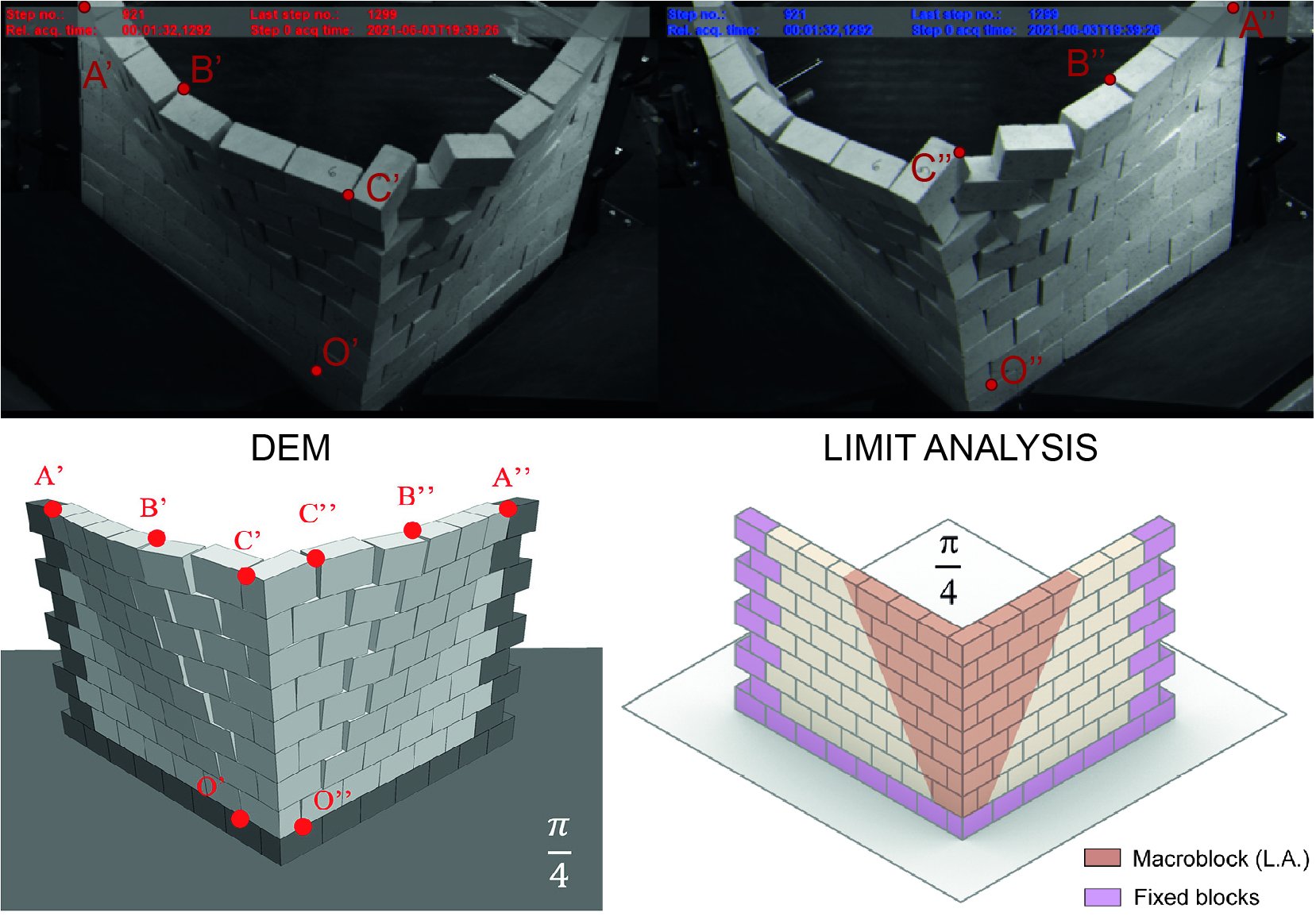The S4H team recently published a new paper in the Construction and Building Material Journal. This research focuses on the study of the pseudo-static load orientation influence on masonry corner failures.
When an earthquake occurs, localised out-of-plane mechanisms are prone to form in historical masonry structures. In particular, post earthquakes surveys proved that corner elements are particularly vulnerable and their collapse is likely to happen. However, limited investigations on the seismic response of masonry systems are existing in the literature and none of them considers the variation of the loading orientation. This paper aims to fill such a gap by presenting a work which embraces experimental, numerical and analytical outcomes. The main objectives can be summarised as follows:
- Provide experimental data to validate numerical and analytical methodologies to study the stability of masonry corners.
- Provide an illustrative example of the complete characterisation of dry-joint masonry specimens at low normal stress, including dry-joint stiffness.
- Quantify the effect of the seismic orientation on the failure mechanism and associated collapse load multiplier of masonry corners.
- Improve existing analytical LA models to account for the orientation of the seismic loading in an integrated way.
- Validate LA predictions of the collapse load multiplier and failure mechanism against experimental and numerical DEM results.
Please find more details at the following link.
Share this post
